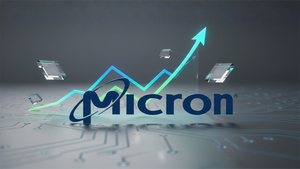SKYSONA is the first and only gene therapy approved in the EU to treat early CALD
CALD is a rare neurodegenerative disease that can lead to progressive, irreversible loss of neurologic function, and death
One-time treatment with SKYSONA has been shown to have a durable effect in improving survival outcomes and preserving neurologic function across pivotal and long-term studies, with the longest follow-up of nearly seven years (82.7 months)
SKYSONA uses the patient’s own blood stem cells and there have been no reports of graft-versus-host disease (GVHD), graft failure or rejection, or transplant-related mortality (TRM) (n=51) across clinical studies to-date
bluebird bio, Inc. (Nasdaq: BLUE) today announced that the European Commission (EC) has granted marketing authorization of SKYSONA™ (elivaldogene autotemcel, Lenti-D™), a one-time gene therapy for the treatment of early cerebral adrenoleukodystrophy (CALD) in patients less than 18 years of age with an ABCD1 genetic mutation, and for whom a human leukocyte antigen (HLA)-matched sibling hematopoietic (blood) stem cell (HSC) donor is not available. SKYSONA is the first one-time gene therapy approved in the European Union (EU) to treat CALD, a rare neurodegenerative disease that occurs in childhood and can rapidly lead to progressive, irreversible loss of neurologic function, and death.
Adrenoleukodystrophy (ALD) is a rare, X-linked metabolic disorder that primarily affects males; worldwide, an estimated one in 21,000 male newborns are diagnosed with ALD. The disorder is caused by mutations in the ABCD1 gene that affect the production of adrenoleukodystrophy protein (ALDP) and subsequently causes toxic accumulation of very long-chain fatty acids (VLCFAs), primarily in the adrenal gland and white matter of the brain and spinal cord. Approximately 40% of boys with ALD will develop CALD, the most severe form of ALD. CALD is a progressive and irreversible neurodegenerative disease that involves the breakdown of myelin, the protective sheath that nerve cells need to function effectively, especially for thinking and muscle control. The onset of symptoms of CALD typically occurs in childhood (median age 7).1 Early diagnosis of CALD is essential as the outcome of treatment varies with the clinical stage of the disease. Therefore, treatment must be administered before the disease progresses too far.
“SKYSONA is the first and only one-time gene therapy approved in the EU for patients with CALD, a devastating neurodegenerative disease, and we are immensely grateful to all who have brought us to this milestone, from the patients and their loved ones, to all study investigators, regulators, the ALD community and of course, the extended bluebird family,” said Andrew Obenshain, president, severe genetic diseases, bluebird bio. “bluebird bio was founded with the mission of developing a therapy to recode CALD on the genetic level, and today’s announcement represents over twenty years of research and development that has laid the groundwork for future gene therapies to be possible.”
SKYSONA is a one-time gene therapy custom-designed to treat the underlying cause of the neurologic condition CALD. SKYSONA uses ex vivo transduction with the Lenti-D lentiviral vector (LVV) to add functional copies of the ABCD1 gene into a patient’s own HSCs. The addition of the functional ABCD1 gene allows patients to produce the ALD protein (ALDP), which is thought to facilitate the breakdown of VLCFAs. The expression of ALDP and effect of SKYSONA is expected to be life-long. The goal of treatment with SKYSONA is to stop the progression of CALD and, consequently, preserve as much neurological function as possible, including the preservation of motor function and communication ability. Importantly, with SKYSONA, there is no need for donor HSCs from another person.
Previously, the only therapeutic option available to CALD patients was transplantation of stem cells from a donor, called allogeneic hematopoietic stem cell transplant (allo-HSCT), which is associated with severe potential complications and mortality that increase in patients without a matched sibling donor (MSD). It is estimated that more than 80% of patients diagnosed with CALD do not have an MSD.
SKYSONA was reviewed as part of the European Medicines Agency’s Priority Medicines scheme (PRIME) and was previously granted Orphan Medicinal Product status. The marketing authorization is valid in all 27 member states of the EU, as well as Norway, Liechtenstein, and Iceland.
Data Supporting Clinical Profile of SKYSONA From Clinical Development Program
ALD-102 and ALD-104
The marketing authorization of SKYSONA is supported by efficacy and safety data from the Phase 2/3 Starbeam study (ALD-102). Additionally, the Phase 3 ALD-104 study (N=19; as of October 2020) is ongoing. All patients who completed ALD-102, as well as those who will complete ALD-104, will be asked to participate in a long-term follow-up study (LTF-304).
The primary efficacy endpoint of the pivotal ALD-102 study was Major Functional Disabilities (MFD)-free survival, measuring the proportion of patients who did not have any of the six MFDs, were alive, did not receive a second allo-HSCT or rescue cell administration, and had not withdrawn or been lost to follow-up at Month 24. In ALD-102, 32 patients have been treated with SKYSONA and, as of October 2020, 30 of 32 patients were evaluable for follow-up at Month 24. As of the data cutoff date, 90% (27/30) of the patients met the Month 24 MFD-free survival endpoint. As previously reported, two patients withdrew from the study at investigator discretion, and one experienced rapid disease progression early in the study, resulting in MFDs and subsequent death.
In ALD-102, 26 of 28 evaluable patients maintained a neurologic function score (NFS) less than or equal to 1 through Month 24, and 24 of those patients had no change in their NFS, which showed maintenance of neurological function in the majority of patients. All patients who completed ALD-102 enrolled for long-term follow-up in the LTF-304 study.
SKYSONA showed a durable effect on MFD-free survival, with most patients (26/27, 96.3%) that enrolled in LTF-304 remaining alive and maintaining their MFD-free status through their last follow-up on study. The median duration of follow-up was 3.2 years (38.6 months; min.: 13.4; max.: 82.7) and 14 patients reached at least their Year 5 follow-up visit. One patient enrolled in LTF-304 but refused further follow-up later.
The treatment regimen, comprising stem cell mobilization and collection, conditioning, and SKYSONA infusion, had a safety/tolerability profile primarily reflective of the known effects of mobilization/apheresis and conditioning.
Adverse reactions attributed to SKYSONA observed in clinical trials include cystitis viral, pancytopenia, and vomiting.
There have been no reports of graft-versus-host-disease (GVHD), graft failure or rejection, transplant-related mortality (TRM), or replication competent lentivirus in the 51 patients treated with SKYSONA in clinical studies (ALD-102/LTF-304 and ALD-104). Clonal expansion resulting in clonal predominance has been detected in some patients treated with SKYSONA. While there have been no reports of lentiviral vector-mediated oncogenesis, including myelodysplasia, leukemia, or lymphoma, associated with SKYSONA, there is a potential risk of malignancy after treatment with SKYSONA.
For further details, please see the Summary of Product Characteristics (SmPC).
ALD-103
The efficacy and safety of allo-HSCT in patients with CALD was observed in a contemporaneous comparator study ALD-103 (N=59), which assessed safety and efficacy outcomes of this therapeutic option in boys 17 years of age or younger with CALD. Of the 59 patients, 27 patients matched the ALD-102 population based on disease characteristics. This population was further divided into those who received an allo-HSCT from an MSD (N=10; ALD-103 Efficacy Population with MSD) and those who received an allo-HSCT from an alternative donor source, i.e., not an MSD (N=17; ALD-103 Efficacy Population without MSD). Proportion of MFD-free survival at Month 24 was analyzed in ALD-102 (90% [95% CI: 73.5, 97.9]; 27/30 evaluable patients) and compared to 17 patients treated with allo-HSCT without an MSD in ALD-103 (66.7% [95% CI: 29.9, 92.5]; 6/9 evaluable patients).
The proportion of evaluable patients who experienced either acute (≥ Grade II) or chronic GVHD in ALD-102 vs. ALD-103 by Month 24, was 0 vs. 52%. No patients experienced TRM, a secondary endpoint, at 100 days or 365 days after transplant in ALD-102 and ALD-104. In contrast, 2/59 (3.4%) patients experienced TRM at 100 days and 8/59 (13.6%) patients experienced TRM at 365 days after transplant in the ALD-103 Safety Population.
About SKYSONA (elivaldogene autotemcel, formerly Lenti-D™ gene therapy)
The U.S. Food and Drug Administration (FDA) granted SKYSONA Orphan Drug status, Rare Pediatric Disease designation and Breakthrough Therapy designation for the treatment of CALD. bluebird bio is currently on track to submit the Biologics License Application (BLA) in the U.S. by mid-2021.
In the EU, SKYSONA is approved for the treatment of early CALD in patients less than 18 years of age with an ABCD1 genetic mutation, and for whom an HLA-matched sibling HSC donor is not available. A marketing authorization application for SKYSONA is currently under review by the Medicines and Healthcare products Regulatory Agency (MHRA) in Great Britain.
The Phase 3 ALD-104 study, designed to assess the efficacy and safety of SKYSONA after myeloablative conditioning using busulfan and fludarabine in patients with CALD, is approaching enrollment completion; enrollment in Europe is closed.
The Phase 2/3 Starbeam study (ALD-102) is complete. For more information about our studies, visit: www.bluebirdbio.com/our-science/clinical-trials or clinicaltrials.gov.
Additionally, bluebird bio is conducting a long-term safety and efficacy follow-up study (LTF-304) for patients who have been treated with SKYSONA for CALD and completed two years of follow-up in bluebird bio-sponsored studies. Patients treated with SKYSONA in Europe are expected to enroll in the REG-502 Stargazer registry.
About CALD Early Diagnosis
Early diagnosis of CALD is essential, as the outcome of treatment varies with the clinical stage of the disease. Therefore, treatment must be administered before the disease progresses too far. Newborn screening is a critical enabler of early diagnosis for ALD and provides access to a window for the timely commencement of available therapies. Once a patient has been diagnosed with ALD, regular MRI scans are critical to detect white matter changes indicative of progression to CALD as, currently, there is no way to predict who with ALD will develop CALD. In the absence of newborn screening for ALD, early detection of ALD symptoms is crucial to allow for timely treatment.
Unfortunately, in most EU countries, there is no newborn screening for ALD, and therefore it is difficult to detect patients at risk of developing CALD.
In the U.S., newborn screening for ALD was added to the Recommended Universal Screening Panel in February 2016 and is currently active in 20 states and the District of Columbia, accounting for >60% of U.S. newborns.
About bluebird bio, Inc.
bluebird bio is pioneering gene therapy with purpose. From our Cambridge, Mass., headquarters, we’re developing gene and cell therapies for severe genetic diseases and cancer, with the goal that people facing potentially fatal conditions with limited treatment options can live their lives fully. Beyond our labs, we’re working to positively disrupt the healthcare system to create access, transparency, and education so that gene therapy can become available to all those who can benefit.
bluebird bio is a human company powered by human stories. We’re putting our care and expertise to work across a spectrum of disorders: cerebral adrenoleukodystrophy, sickle cell disease, β-thalassemia, and multiple myeloma, using gene and cell therapy technologies including gene addition, and (megaTAL-enabled) gene editing.
bluebird bio has additional nests in Seattle, Wash.; Durham, N.C.; and Zug, Switzerland. For more information, visit bluebirdbio.com.
Follow bluebird bio on social media: @bluebirdbio, LinkedIn, Instagram and YouTube.
SKYSONA and bluebird bio are trademarks of bluebird bio, Inc.
Forward-Looking Statements
This release contains “forward-looking statements” within the meaning of the Private Securities Litigation Reform Act of 1995, including statements regarding the company’s expectations and plans for regulatory submissions and approvals for eli-cel in the United States. Any forward-looking statements are based on management’s current expectations of future events and are subject to a number of risks and uncertainties that could cause actual results to differ materially and adversely from those set forth in or implied by such forward-looking statements. These risks and uncertainties include, but are not limited to: the risk that the Starbeam Study will be insufficient to support regulatory submissions or marketing approval in the U.S., or that the FDA may require additional data or information beyond our current expectations, the risk that our submissions for regulatory approval in the U.S. will not be submitted or accepted for filing by the FDA on the timeframe we expect or at all; and the risk that eli-cel is associated with insertional oncogenesis or other safety events that impact the risk-benefit profile of the therapy; the risk that our commercialization of SKYSONA in the European Union will not be successful; and the risk that we are not able to negotiate a price or obtain reimbursement for eli-cel or our other products sufficient to support commercialization in Europe or the United States. For a discussion of other risks and uncertainties, and other important factors, any of which could cause our actual results to differ from those contained in the forward-looking statements, see the section entitled “Risk Factors” in our most recent Form 10-Q, as well as discussions of potential risks, uncertainties, and other important factors in our subsequent filings with the Securities and Exchange Commission. All information in this press release is as of the date of the release, and bluebird bio undertakes no duty to update this information unless required by law.
1 Mallack et al. MRI surveillance of boys with X-linked adrenoleukodystrophy identified by newborn screening: Meta-analysis and consensus guidelines. J Inherit Metab Disease 2021. 44(3):728-39.
View source version on businesswire.com: https://www.businesswire.com/news/home/20210721005331/en/
Contacts
Media:
Victoria von Rinteln, 617-914-8774
vvonrinteln@bluebirdbio.com
Investors:
Elizabeth Pingpank, 617-914-8736
epingpank@bluebirdbio.com





